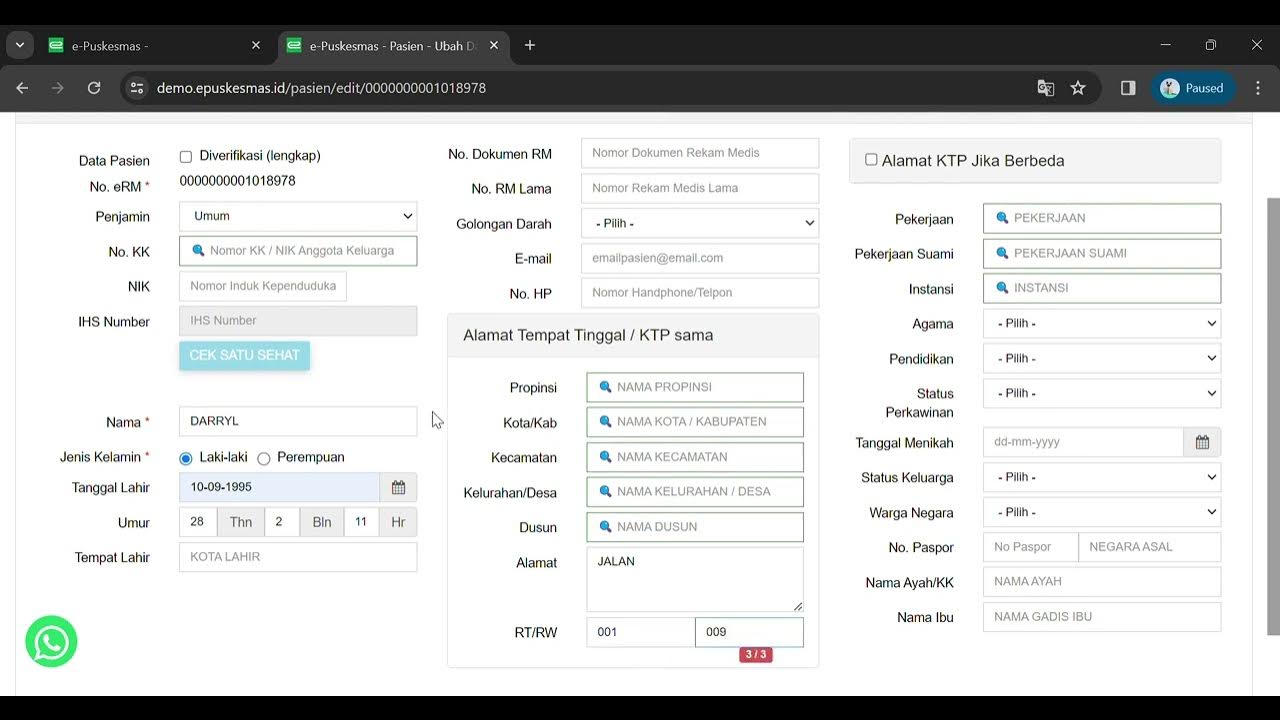Alur dan Prosedur Pasien Baru Rawat Inap. Alur Berkas Rekam Medis
Summary
TLDRThis transcript outlines the process of patient registration at a hospital, including filling out forms, choosing room classes, and confirming insurance options. It details the steps of medical record handling, including the coding of diagnoses and treatments using ICD-10 and ICD-9-CM. Additionally, the document retention and destruction policies are discussed. The hospital staff ensures the patient's medical records are processed, indexed, and retained for two years before destruction. The process emphasizes accurate documentation and the management of patient records in compliance with healthcare regulations.
Takeaways
- 😀 The patient, a child, requires inpatient care due to dehydration, and the registration process begins with this need for treatment.
- 😀 The guardian is informed about the available payment options, including BPJS, general insurance, or private payment plans.
- 😀 The hospital provides different room classes, including VIP, Class 1, Class 2, and Class 3, allowing the guardian to choose based on their preferences and budget.
- 😀 The patient is assigned to a Class 2 room after confirming its availability with the nursing staff.
- 😀 The guardian is asked to sign a general consent form after reviewing the terms, confirming their agreement to the hospital's policies and treatment procedures.
- 😀 After registration, the guardian is provided with a patient identity card and a 'KB' (revisit) card for future visits.
- 😀 Medical records are processed with the completion of necessary forms, signatures, and the creation of the patient's file in the hospital's system.
- 😀 Staff ensure proper organization of medical records, ensuring they are correctly coded, indexed, and stored for future reference.
- 😀 Medical coding is done using ICD-10 for diagnoses and ICD-9CM for medical procedures, crucial for accurate billing and treatment tracking.
- 😀 Indexing of patient records is performed to create tabulations of coded diagnoses and procedures, using either physical or computerized systems for efficiency.
- 😀 Retention and destruction procedures are followed for medical records, including the destruction of outdated documents that are no longer in use, after two years of inactivity.
Q & A
What is the main reason the mother seeks medical attention for her child?
-The child is suffering from dehydration, which requires hospitalization.
What are the payment options available to the patient for hospitalization?
-The patient can choose from BPJS (Indonesian health insurance), general insurance, or self-pay (general).
What type of room did the patient choose for the child’s hospitalization?
-The patient opted for a Class 2 room, which is a mid-range option available in the hospital.
What is the significance of the 'persetujuan umum' (general consent form) in the hospital process?
-The general consent form is a document that the patient must read and sign, confirming their agreement to proceed with the hospitalization and treatment plan.
How does the hospital handle patient records after registration?
-After registration, the hospital sorts and indexes the medical records chronologically. Medical coding is then applied using ICD-10 for diagnoses and ICD-9 for medical procedures.
What is the purpose of 'indexing' in medical record management?
-Indexing ensures that medical records are organized and categorized correctly, either manually or through a computerized system, to ensure easy retrieval and accurate data management.
How does the hospital ensure data accuracy and proper record-keeping?
-The hospital uses a systematic process to organize, code, and index medical records, ensuring that all documents are correct and accessible when needed. They also regularly check the completeness of the data.
What is 'coding' in medical records, and how is it done?
-Coding in medical records refers to the process of assigning specific codes to diagnoses and medical procedures using standardized systems like ICD-10 for diseases and ICD-9 for treatments.
What happens to medical records after they are no longer in use?
-Medical records that have been inactive for two years or more undergo retention processes, where only necessary documents are kept, and old records are either shredded or burned for destruction.
What additional document does the patient receive for future visits?
-The patient is provided with a follow-up card (KB) that must be brought along for any future medical visits to the hospital.
Outlines

This section is available to paid users only. Please upgrade to access this part.
Upgrade NowMindmap

This section is available to paid users only. Please upgrade to access this part.
Upgrade NowKeywords

This section is available to paid users only. Please upgrade to access this part.
Upgrade NowHighlights

This section is available to paid users only. Please upgrade to access this part.
Upgrade NowTranscripts

This section is available to paid users only. Please upgrade to access this part.
Upgrade NowBrowse More Related Video

Praktik Pelayanan Prima Rumah Sakit

Pertanyaan Yang Diajukan Saat Interview Masuk PNM Meekar 2022. || Cerita Pengalaman

Tutorial Mendampingi Pasien Sakaratul Maut Dan Merawat Jenazah

Tutorial Penggunaan ePuskesmas PENDAFTARAN

Cara Membuat NPWP ONLINE Pribadi Buat Yang BELUM Bekerja 2022

ROLEPLAY ORIENTASI PASIEN BARU Kelompok 4
5.0 / 5 (0 votes)